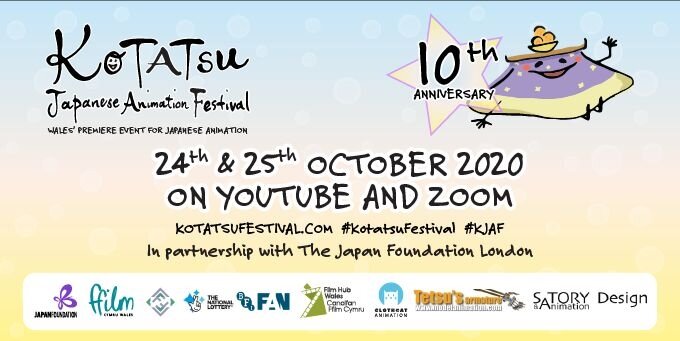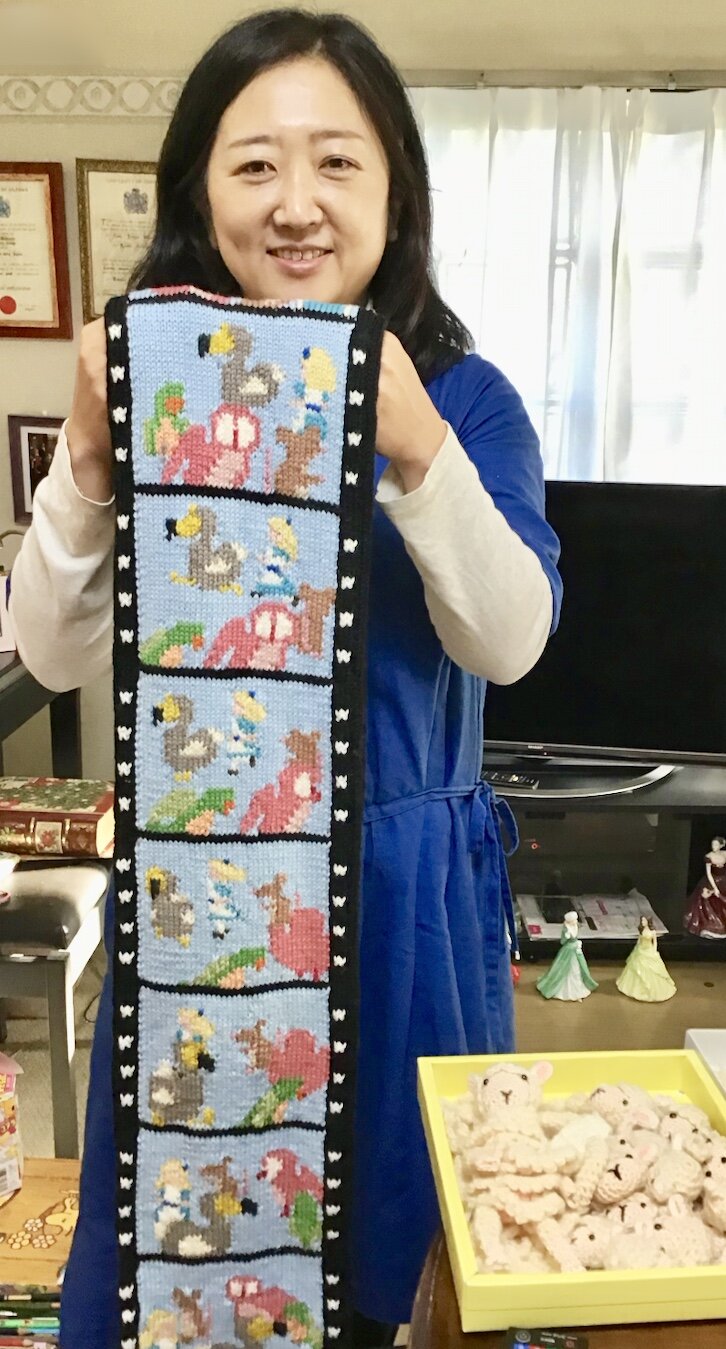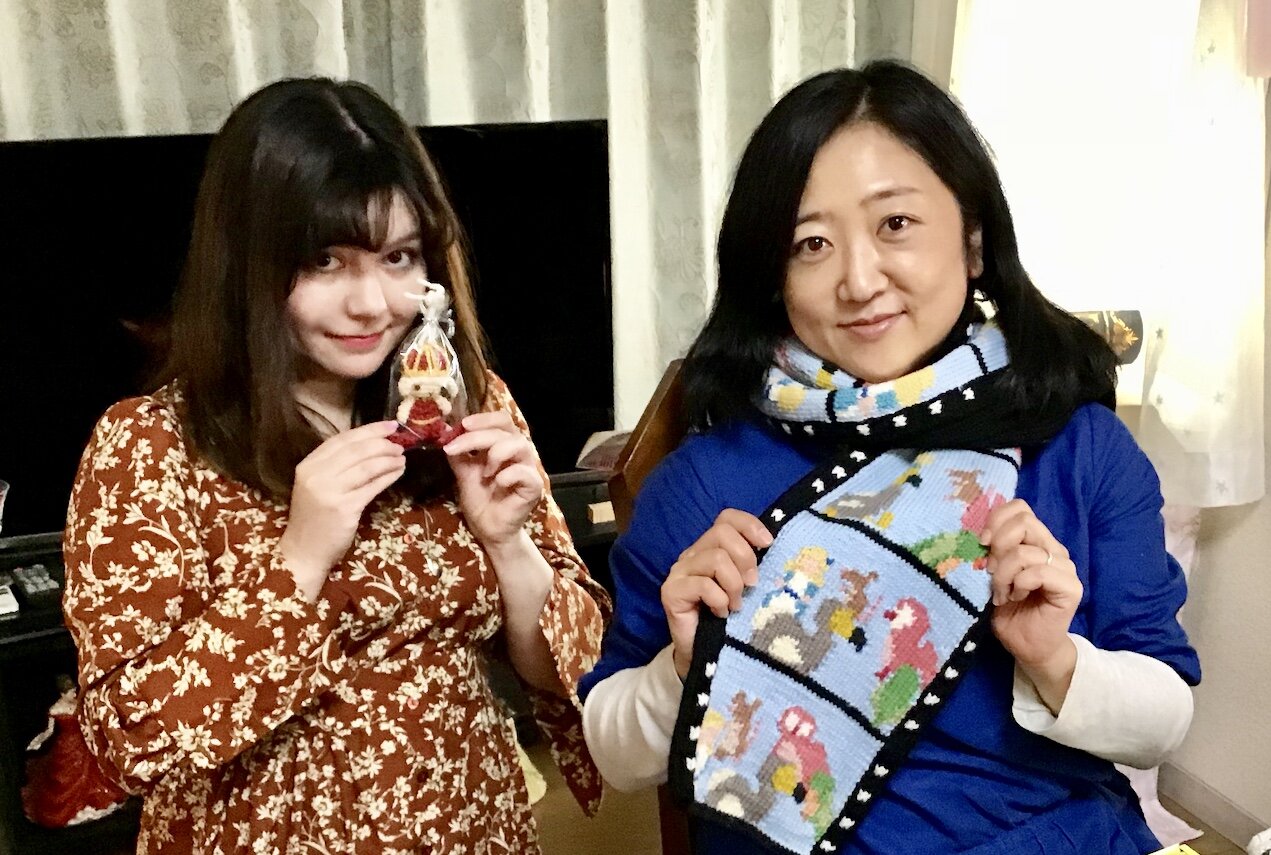Review: Kotatsu Animation Festival - 10th Anniversary (2020)
During October 24th-26th 2020, the Kotatsu Animation Festival held its 10th anniversary festival. Sponsored by Japan Foundation London and hailed as Wales’ premiere event for Japanese animation, this year’s event was held online due to the Coronavirus pandemic, with showings of the festival films live on the Kotatsu Japanese Animation Festival YouTube channel and several Zoom Q+A’s and workshops were held (Fig. 1).
The main event of this year’s festival was the showing of a selection of animation films by Yamamura Koji, a professor at Tokyo University of the Arts. This was followed by the showing of works by five other established Japanese animators: Yata Miho (The King of Amechau Country – Mother Goose); Hosokawa Shin (Dino!), Sukikara Makiko (Deep Sea’s Rainbow) and Miyazawa Mari (Waltz). The remainder of the festival programme was devoted to student films from Japanese universities: Tokyo; Kyoto and Hiroshima. In this review of the festival, I want to concentrate on Yamamura’s output, in particular Mount Head, his best-known work, and Yata Miho and her most recent film The King of Amechau Country – Mother Goose. Out of the whole festival, these two filmmakers are representative figures working in those fields of film animation in Japan that they have made their own: Yamamura, the chief proponent of experimental, academic film animation; and Yata Miho, and her unusual and unique self-styled ‘amimation’ (sic) knitting films (Fig. 2).
The first day of the programme was arguably the highlight of the festival and focused on Yamamura Koji, a highly-regarded Japanese animator influenced by the Indian animator Ishu Patel and the Belgian surrealist filmmaker Luis Bunuel amongst others. This section showcased five of his films: Mount Head (2002), an experimental film originally made on 16mm film, now restored on 4K and having its 4K version World Premiere at the festival; his best-known work, Notes on Monstropedia (2016); Water Dream (2017); and Dreams into Drawing (2019), a film exploration of ‘dreams as shared experience’, which received its UK Premiere, and was one of the festival viewers’ top films, winning the Audience Award for ‘Best Film 2020 Koji Yamamura Programme’.
As an experimental film animator, Yamamoto in each of his films uses different approaches to his stories and subject matter. With many filmmakers, there is a distinct style to their work, even though they often experiment with different approaches. Whereas, Yamamoto deliberately selects a distinctly different subject matter for each of his films, so that it becomes difficult to compare a work with a previous one. Rather than attempting to improve an existing style within his films, he focuses on new subjects, thereby revealing new facets of his personality. To understand him, we thus need to look at all of his work, not only Mount Head. This festival ultimately gave the attendees exposure to his different personalities, and helps better assess his output as a truly distinctive animator.
Mount Head (2002) is the most commercially successful of the five Yamamura films shown at the festival. Nominated for an Oscar at the 75th Academy Awards in 2003, it is a short film of 10-minutes duration, having taken 6 years to make. It is essentially a work of fantasy, and at the core of the story its the fantastical event of the growth of a cherry blossom tree on an old man’s head. The importance of having this film included in the festival lies in the ability of the film, a fantasy, to transport the viewer beyond this fantasy storyline back to reality. Many academics have argued that the Japan portrayed in Japanese animation films is, at best, a pseudo Japan, Yamamura’s Mount Head, however, gives us a glimpse of a far more ‘real’ Japan.
Yata Miho’s connection to Yamamura’s work is twofold: not only was her film The King of Amechau Country – Mother Goose shown immediately after Yamamura’s works in the festival, she actually participated in the making of Mount Head itself, having assisted in its production. Yata’s first attempt at film animation was with clay. However, she soon realized her own technical limitations using this medium. As knitting was her forte, she decided to experiment with animation using figures and backgrounds she herself knitted. She terms her animation ‘amimation’ (sic), ‘ami’ being the Japanese word for knitting. The term in Japanese embraces various ‘knitting’ techniques. Her animation films include Shi-Ki (2000), Life Story (2004), The Sunflower Seed (2008), Film Muffler (2013) and the more recent Film Muffler Alice (2018). She receives inspiration for her work from reading picture books and going to exhibitions.
The film shown at the 10th anniversary Kotatsu Festival is a little over 2 minutes long and is a sequel to other films in the series based around her imaginary King of Amechau. The stories are written by her in collaboration with her young daughter, and the films are intended for viewing by nursery school children and their mothers. This latest work is a continuation of the original story of a sheep without clothes who knits his own clothes and becomes the King of the kingdom of Amechau (Fig. 3). In Yata’s version of the Mother Goose rhyme of the 24 blackbirds in a pie, 24 chicks, by mistake, fly out of her pie.
During ‘Knitting into Animation’, an online talk with the animator Yata Miho and composer Yoda Takeshi, we learnt that at the time when Yata started knitting - now some 20 years ago – she wanted to have a song about knitting as she wanted to have a song to accompany her story for her play with her students. She approached Yoda Takeshi, a composer specializing in music for silent films. Through the use of the theremin, Yata was able to achieve an effective sound, a ‘voice’ for her knitted characters. During this Zoom session, Yoda Takeshi also demonstrated how to play the theremin and the history of the instrument in films in the 1940’s and 1950’s as a sound effect within horror and science fiction.
Yata’s film’s in particular caught my attention and so I caught up with Yata Miho in Tokyo a few weeks after the festival for a chat over tea on her way back from Shirayuri University, where she teaches at the Children’s Literature Department (Fig. 3). I asked for her reaction to having her film selected for the 10th anniversary festival, Yata noted that, when another work of hers – Kni-Train - was screened at an earlier Kotatsu Festival, regrettably she was not able to attend that festival in person and thus could not judge the viewers’ reactions to her film. This time, although she thought it a pity that she could not judge the spontaneous reaction of viewers in Wales, she was able to glimpse the reaction of her audience through an online chat with viewers who participated in this year’s event. This made her very happy. My conversation with Yata Miho (Fig. 4) also answered a question in the back of my mind: the meaning of ‘yarn’ in the latest film. Was it intentionally used as a pun for ‘story’ and ‘knitting material’, as the English word might suggest? Apparently not. The word, she observed, is derived from the Japanese exclamation ‘Yaaa!’, expressing a reluctance to do something.
So why was Yata’s work chosen again for the festival? I believe the answer lies in the times we live in. For the organizers and attendees alike, fed up with the restrictions and anxiety brought on by the Coronavirus pandemic, and the resulting hardening of emotions and the growing unkindness of people to each other in its wake, there was a need to escape from the real world (if only for a few precious moments) and embrace a world very different from that experienced by people every day. This world of happiness, tenderness and softness is the essence of Yata’s world. Made for young children and their mothers (a relationship now more than ever crying out for kindness and tenderness), the film helps brings a sense of security and happiness not only to both child and mother, but also to adults in general wishing to retire to a fantasy world.
On a positive note in this year of the Coronavirus pandemic, the online Kotatsu Festival has allowed viewers worldwide an opportunity of tasting the array of fruit on offer from the orchard of Japanese animation (and ‘amimation’). Participants were able to enjoy a true variety of short film gems in different animation styles, including clay and the rare knitting style, making the Kotatsu Festival a truly unique event.
The weather has turned cold and I, sitting at my kotatsu with juicy oranges by my side, wait impatiently to taste next year’s Kotatsu Animation Festival’s new crop of films.
**Article published: November 20, 2020**
Biography
Educated in Oxford, Vienna and Tokyo, Anastasia Marika Williams obtained her undergraduate degree in French language and literature from Shirayuri University, Tokyo and her master’s degree in film studies (Nouvelle Vague studies) from Gakushuin University, Tokyo. Trained in filmmaking at the Tokyo Movie School, she directs documentary films, music videos and internet commercials. She currently resides in Tokyo. Her homepage is: http://www.marijapan.studio. She can be contacted at: studiomarijapan@gmail.com. Visit her Facebook page at: https://www.facebook.com/anastasiamarika.williams.5.





